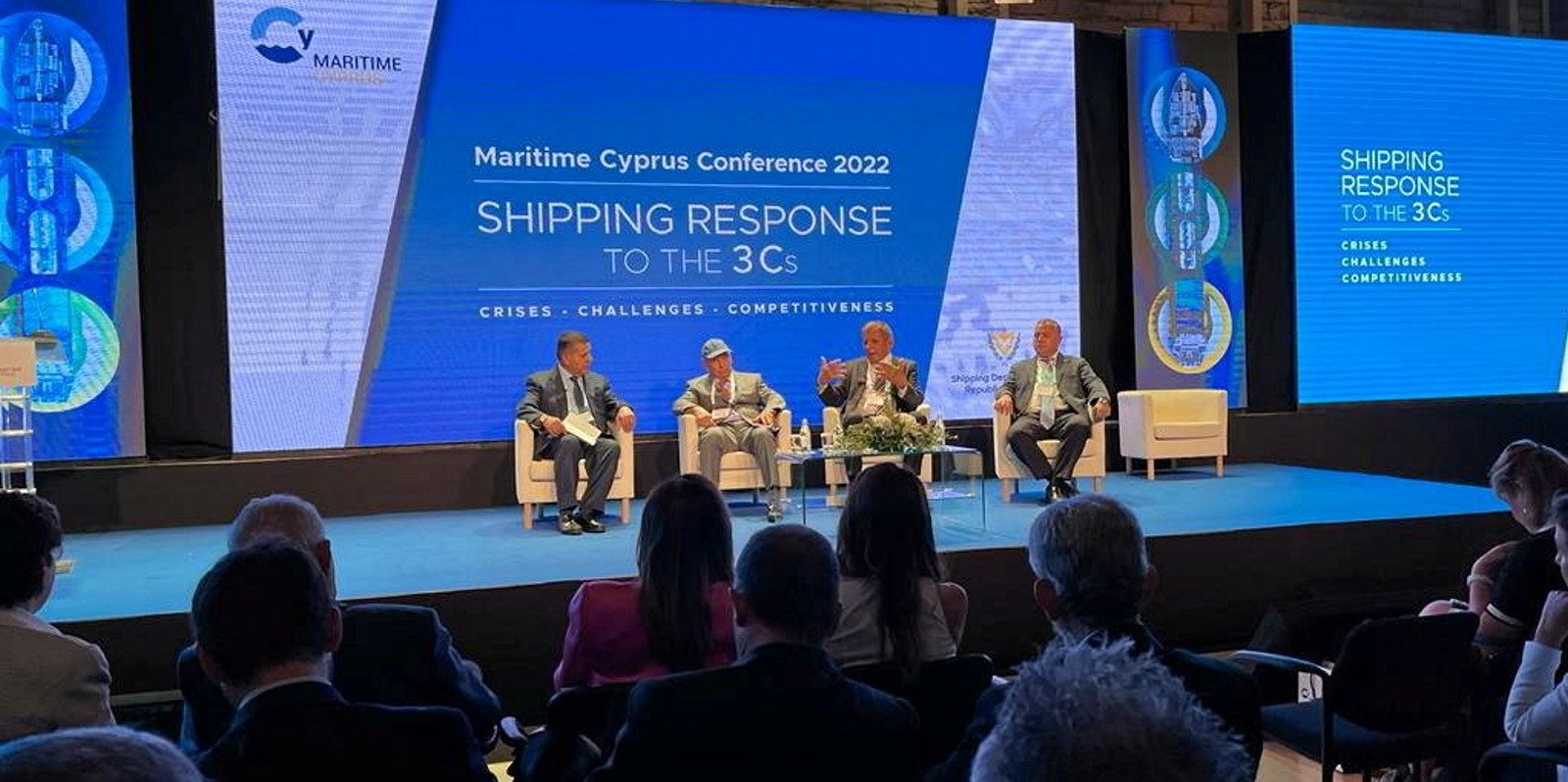Talk of shipping reaching the International Maritime Organization’s carbon reduction targets — let alone a more ambitious net zero by 2050 — are little more than the “Emperor’s New Clothes”, the Maritime Cyprus Conference has heard.
Uncertainties over future fuel technology and availability, alongside targets that do not match the current trajectory of carbon cuts, present big challenges, a group of experienced marine engineers argued.
To hit current decarbonisation goals, “everyone would need to be getting pretty frantic”, said Henning Brauer, technical director of Hamburg specialist shipowner and trader GEFO.
“The gap between ratified goals and where we are going is immense. It’s the Emperor’s New Clothes. Everybody knows it’s not going to be reached, but everyone’s afraid to say it.”
Global carbon emissions from shipping rose in 2021 and are set to rise again this year, driven by more ships carrying more trade, after falling for a period in the last decade.
The IMO has a current target of a 50% reduction from 2008 levels by 2050, but many countries and companies are aiming to lift that ambition radically to a net zero level to meet the targets set by the 2015 Paris Agreement on climate change.
Achievement of either target would require a dramatic acceleration of green fuel use in the 2030s.
GEFO, a major player in the coastal and inland shipping of petrochemicals and gases in northern Europe with a fleet of 148 vessels, says it is committed to a sustainable future. Its flagship is the world’s first LNG-fuelled chemical tanker of less than 10,000 dwt.
Brauer’s comments came in response to questions from panel moderator Sveinung Oftedal about whether shipping is close to reaching a tipping point in cutting carbon emissions.
‘It has started’
Oftedal, a specialist director in Norway’s Ministry of Climate & Environment, and a veteran of IMO negotiations, argued that the tipping point has indeed been reached. “It has started,” he asserted.
Four drivers are combining to push the industry, he argued: IMO rules due to come into force at the start of 2023 to cut operating emissions; regional regulations — such as in Europe — to price carbon and drive green fuel use; national stimulus measures; and the emerging appetite in the commercial market.
The new rules “will have significant implications”, Oftedal said. While most of the new ship market remains dominated by conventionally fuelled engines, the appetite for dual-fuel vessels is increasing rapidly. “If you haven’t formed a strategy, you must.”
A barrier to the take-up of new fuels is confusion over which technology to select.
“The many fuelling options has created stumbling blocks,” said John Kokarakis, Bureau Veritas technical director for south-east Europe.
“Regulatory, technical and financial uncertainty makes shipping people a bit uncomfortable. This uncertainty needs to be resolved. This can be achieved in steps, with a phased approach.
“We need to proceed with care to avoid stranded assets.”
Shipowners face a difficult choice between the array of future fuels — LNG, ammonia, hydrogen, methanol and even nuclear — according to Panos Zachariadis, technical director of Atlantic Bulk Carriers Management.
The Greek ultramax and supramax owner and operator wrestled with the pros and cons of the various options before opting for methanol.
Zachariadis said he was concerned about LNG because of methane slip and ammonia due to toxicity, but methanol appeared to have the best profile. “This is why we have taken a decision [to order],” he concluded.





